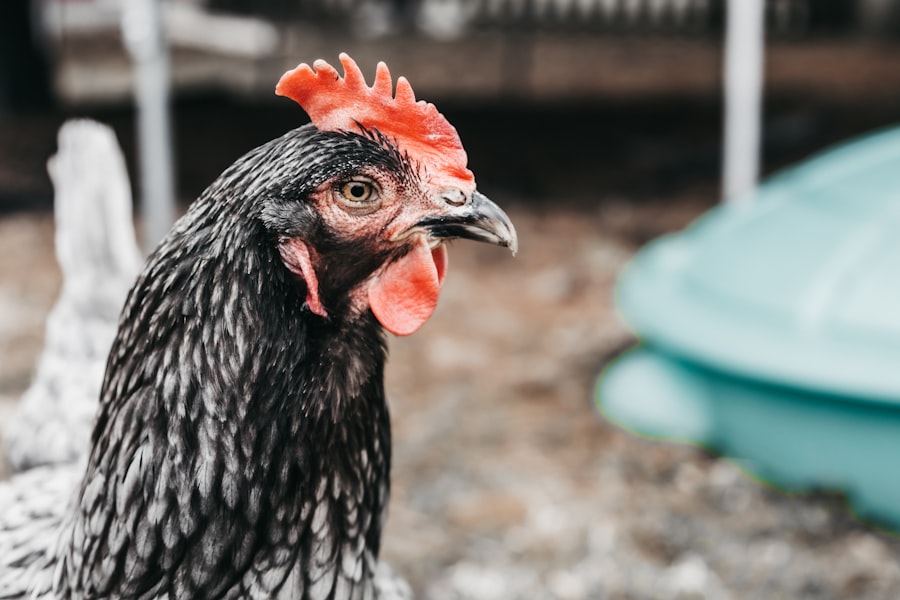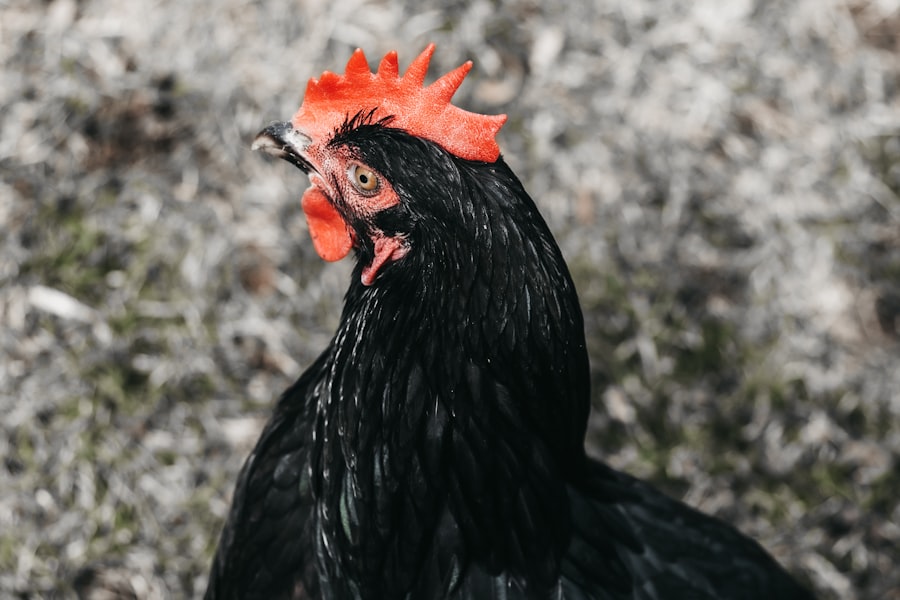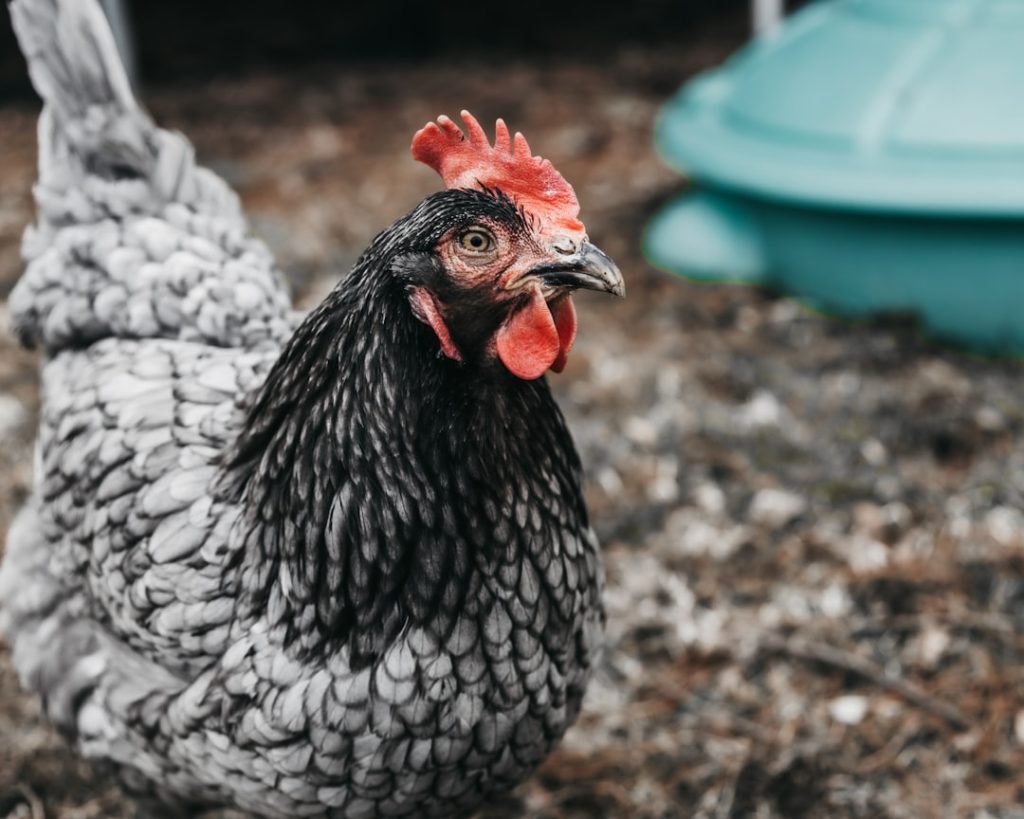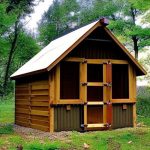Hawks pose a significant threat to chickens due to their predatory nature, excellent vision, and sharp talons. These raptors are known for their aerial attacks, swooping down to capture unsuspecting chickens. Chickens, being ground-dwelling birds, lack the necessary defenses against such aerial assaults, making them vulnerable targets.
Hawks are persistent hunters, often making multiple attempts to catch their prey, which can result in stress, injuries, or fatalities among chickens. The presence of hawks can have detrimental effects on chicken flocks. Chickens are naturally anxious animals, and the threat of hawk attacks can increase their stress levels significantly.
This heightened anxiety can lead to reduced egg production and overall decline in flock health. Furthermore, the loss of chickens to hawk predation can have severe economic consequences for chicken owners, particularly those who depend on their flocks for eggs or meat production. It is crucial for chicken keepers to be aware of the risks hawks present to their flocks.
Understanding this threat enables them to implement appropriate protective measures to safeguard their chickens and maintain the health and productivity of their flocks.
Table of Contents
- 1 Creating a Secure Chicken Coop
- 2 Implementing Visual Deterrents
- 3 Using Sound Deterrents
- 4 Providing Safe Roaming Areas
- 5 Building Covered Runways
- 6 Seeking Professional Help
- 7 FAQs
- 7.1 What are some effective methods to keep hawks away from chickens?
- 7.2 What are some visual deterrents that can be used to keep hawks away from chickens?
- 7.3 What type of fencing or netting can be used to protect chickens from hawks?
- 7.4 How can providing hiding spots for chickens help keep hawks away?
- 7.5 Are there any legal methods to deter hawks from chickens?
Key Takeaways
- Hawks pose a threat to chickens and can be deterred with visual and sound deterrents
- Creating a secure chicken coop is essential to protect chickens from predators
- Visual deterrents like scarecrows and reflective objects can help keep hawks away from the coop
- Sound deterrents such as wind chimes and predator calls can also deter hawks from attacking chickens
- Providing safe roaming areas and building covered runways can give chickens space to move while staying protected from hawks
- Seeking professional help can provide additional guidance and support in protecting chickens from hawk attacks
Creating a Secure Chicken Coop
Building a Secure Chicken Coop
One of the most crucial steps in safeguarding chickens from hawk attacks is to create a secure chicken coop. This involves ensuring that the coop is fully enclosed on all sides, including the top, to prevent hawks from gaining access to the chickens. The coop should be constructed from sturdy materials that cannot be easily broken or penetrated by predators.
Regular Maintenance and Inspection
In addition to securing the coop itself, it is essential to regularly inspect the coop for any signs of wear or damage that could compromise its security. This proactive approach helps identify and address potential vulnerabilities before they can be exploited by predators.
Securing the Surrounding Area
Securing the area surrounding the coop is also vital in preventing hawk attacks. This can be achieved by installing fencing around the perimeter of the coop to create a barrier between the chickens and potential predators. The fencing should be tall enough to prevent hawks from flying over it, and buried into the ground to prevent predators from digging underneath it.
By creating a secure chicken coop and surrounding area, chicken owners can provide their flock with a safe and protected environment in which to live and thrive.
Implementing Visual Deterrents

Visual deterrents can be an effective way to deter hawks from targeting chickens. One common visual deterrent is the use of scarecrows or other human-like figures placed strategically around the chicken coop. Hawks are known to be wary of humans, so the presence of these figures can make them think twice about approaching the coop.
Additionally, reflective objects such as shiny tape or CDs can be hung around the coop to create flashes of light that can startle and deter hawks. Another visual deterrent that can be effective is the use of predator decoys, such as plastic owls or hawks. These decoys can create the illusion that there is already a predator in the area, causing real hawks to avoid the area in fear of competition or confrontation.
It is important to regularly move these decoys around the coop to prevent hawks from becoming accustomed to their presence. By implementing visual deterrents, chicken owners can help protect their flock from potential hawk attacks.
Using Sound Deterrents
In addition to visual deterrents, sound deterrents can also be effective in deterring hawks from targeting chickens. One common sound deterrent is the use of noise-making devices such as air horns or whistles that can be activated when hawks are spotted in the area. The sudden loud noise can startle and scare off hawks, preventing them from getting too close to the chickens.
It is important to vary the timing and location of these noise-making devices to prevent hawks from becoming accustomed to them. Another sound deterrent that can be effective is the use of recorded predator calls, such as those of owls or other birds of prey. These calls can create the illusion that there is already a predator in the area, causing hawks to avoid the area in fear of competition or confrontation.
It is important to regularly change the recordings to prevent hawks from becoming accustomed to them. By using sound deterrents in conjunction with visual deterrents, chicken owners can create a multi-layered defense system against potential hawk attacks.
Providing Safe Roaming Areas
Chickens need space to roam and forage, but allowing them to roam freely in an open area can make them vulnerable to hawk attacks. To provide chickens with safe roaming areas, chicken owners can create enclosed outdoor spaces where chickens can roam freely without the risk of being targeted by hawks. These enclosed areas should be covered with netting or wire mesh to prevent hawks from gaining access from above.
In addition to providing safe roaming areas, it is important for chicken owners to regularly inspect these areas for any signs of wear or damage that could compromise their security. This includes checking for holes in the netting or mesh, as well as ensuring that any gates or entrances are securely closed and latched. By providing safe roaming areas for their flock, chicken owners can give their chickens the opportunity to exercise and forage while minimizing the risk of hawk attacks.
Building Covered Runways

Building Covered Runways
Another way to provide chickens with safe roaming areas is by building covered runways that connect different parts of the chicken coop and outdoor areas. These covered runways provide chickens with protected pathways between different areas, allowing them to move freely without being exposed to potential hawk attacks.
Protection from Hawks and the Elements
The runways should be covered with netting or wire mesh to prevent hawks from gaining access from above. In addition to providing protection from hawks, covered runways can also provide chickens with shelter from the elements, such as sun or rain.
Benefits for Chicken Health and Comfort
This can help keep chickens comfortable and healthy while they move between different areas of their living space. By building covered runways, chicken owners can provide their flock with a safe and protected environment in which to move and explore.
Seeking Professional Help
In some cases, despite taking all necessary precautions, hawk attacks on chickens may still occur. When this happens, it is important for chicken owners to seek professional help in dealing with the situation. This may involve contacting local wildlife authorities or bird control experts who can provide guidance on how to deter hawks from targeting chickens.
Professional help may also involve installing more advanced deterrent systems, such as motion-activated sprinklers or electric fencing, which can provide additional protection for chickens against hawk attacks. Additionally, professional help may also involve seeking advice on how to safely relocate hawks away from the area without causing harm to them or violating any wildlife protection laws. In conclusion, protecting chickens from hawk attacks requires a multi-faceted approach that includes creating secure living spaces, implementing visual and sound deterrents, providing safe roaming areas, and seeking professional help when necessary.
By taking these steps, chicken owners can help ensure the safety and well-being of their flock while minimizing the risk of hawk attacks.
If you’re looking for ways to keep hawks from preying on your chickens, you might want to check out this article on poultrywizard.com. It offers tips and strategies for protecting your flock from aerial predators.
FAQs
What are some effective methods to keep hawks away from chickens?
Some effective methods to keep hawks away from chickens include using scare tactics such as visual deterrents like shiny objects or predator decoys, installing physical barriers like netting or fencing, and providing hiding spots for chickens to take cover.
What are some visual deterrents that can be used to keep hawks away from chickens?
Visual deterrents that can be used to keep hawks away from chickens include reflective tape, shiny objects like CDs or aluminum foil, and predator decoys such as fake owls or hawks.
What type of fencing or netting can be used to protect chickens from hawks?
To protect chickens from hawks, it is recommended to use sturdy fencing with small gaps or holes that hawks cannot penetrate. Additionally, netting can be used to cover the chicken coop or run to prevent hawks from swooping down.
How can providing hiding spots for chickens help keep hawks away?
Providing hiding spots for chickens, such as dense shrubbery or covered areas within the chicken coop or run, can help them take cover and avoid being targeted by hawks. This can reduce the likelihood of hawks successfully preying on the chickens.
Are there any legal methods to deter hawks from chickens?
In the United States, it is important to note that hawks are protected under the Migratory Bird Treaty Act, and it is illegal to harm or kill them. Therefore, it is important to use non-lethal and humane methods to deter hawks from chickens.
Meet Walter, the feathered-friend fanatic of Florida! Nestled in the sunshine state, Walter struts through life with his feathered companions, clucking his way to happiness. With a coop that’s fancier than a five-star hotel, he’s the Don Juan of the chicken world. When he’s not teaching his hens to do the cha-cha, you’ll find him in a heated debate with his prized rooster, Sir Clucks-a-Lot. Walter’s poultry passion is no yolk; he’s the sunny-side-up guy you never knew you needed in your flock of friends!







